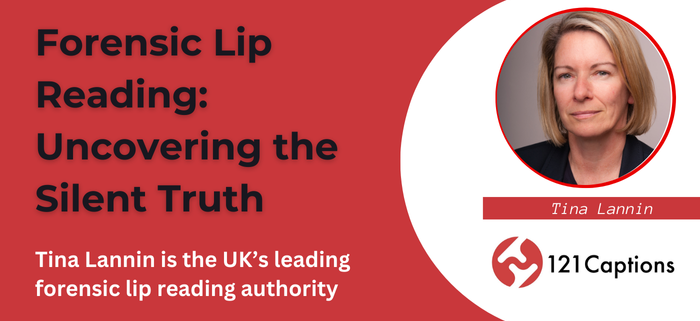Forensic Lip Reading: Uncovering the Silent Truth
Video footage can reveal as much as it conceals, but with forensic lip reading, we can open a window into conversations that might otherwise remain unheard.
This specialised branch of lip reading is an invaluable skill, highly sought after by law enforcement, private investigators and insurance companies, all seeking evidence in cases where traditional audio isn’t available.
With years of dedication, training, and honed expertise, forensic lip readers can interpret the conversations hidden within silent footage, piecing together critical information to support a wide range of investigations.
What is forensic lip reading?
Forensic lip reading elevates traditional lip reading to a precise and evidence-based practice.
Unlike conversational lip reading, which interprets spoken words for personal understanding or communication, forensic lip reading is used to analyse silent footage from CCTV or other recordings for legal or investigatory purposes.
By studying the movements of a speaker’s mouth, an experienced forensic lip reader can provide insights into what was said, shedding light on hidden dialogues that can be vital in determining facts within a case.
How can forensic lip reading help?
Forensic lip reading has proved invaluable in a courtroom. Following the landmark case of R. v Luttrell in 2004, forensic lip reading evidence was deemed admissible in UK courts, a significant step that allowed this skill to support investigations with real legal impact.
Since then, forensic lip reading has played a key role in a number of high-profile cases, helping to piece together crucial evidence that might have otherwise remained hidden.
For example, in the case of Arlene Fraser’s murder, a forensic lip reader was instrumental in transcribing a silent conversation recorded in prison, where Fraser’s husband made incriminating statements.
Although her body was never found, the lip reading analysis contributed to his eventual conviction, demonstrating the powerful potential of this skill in criminal investigations.
Factors affecting forensic lip reading accuracy
Forensic lip reading is as much an art as it is a science. Although it provides unique insights, the accuracy of lip reading can be affected by various factors, with the quality and clarity of video footage being paramount.
Crystal-clear, high-definition footage can be relatively straightforward to analyse, while blurry or shaky footage poses greater challenges. Optimal footage shows the speaker facing the camera, with their lips fully visible, although real-world footage rarely offers these ideal conditions.
Other complicating factors include:
Angle and distance: A speaker at an awkward angle or standing too far from the camera may be harder to interpret.
Lighting: Dark or low-contrast footage makes it difficult to discern lip movements.
Facial obstructions: Sunglasses, hats, and even facial hair can obscure vital facial expressions, making transcription more complex.
Speech nuances: Accents, mumbling, or speech impediments can add further layers of difficulty.
Each piece of footage is unique, and an experienced forensic lip reader understands how to navigate these challenges to provide as accurate a transcription as possible.
Beyond criminal investigations: other uses for forensic lip reading
While forensic lip reading is often associated with crime scenes, its applications extend beyond criminal investigations.
In creating his acclaimed World War I documentary They Shall Not Grow Old, director Peter Jackson relied on forensic lip readers to interpret silent footage of soldiers in the trenches. By deciphering their conversations, Jackson brought these moments to life with actors voicing the soldiers’ words, giving the past a renewed voice and deepening the emotional impact of the documentary.
Forensic lip reading is also widely used in sports, particularly in football. As sports broadcasts became more aware of the impact of visible conversations, it’s now common to see players cover their mouths while discussing strategies or in heated exchanges to prevent their words from being deciphered. Lip readers are sometimes called upon to interpret these interactions, providing deeper insights into the dynamics on and off the field.
Forensic lip reading with 121 Captions
At 121 Captions, we provide expert forensic lip reading services to support both criminal and civil investigations.
Our founder, Tina Lannin, is the UK’s leading forensic lip reading authority, with twenty years of experience in high-profile cases for law firms, media companies and private clients. Tina’s expertise extends to several languages, allowing her to lip-read in Arabic, German, Japanese, and Spanish, an invaluable skill in today’s interconnected world.
Our team of professional lip readers across the UK delivers comprehensive, accurate transcriptions for various needs, including crime scene footage, surveillance and CCTV recordings.
Forensic lip reading is a sophisticated and challenging skill, but the right hands, it offers the potential to uncover truth from silence. Whether you’re in law enforcement, legal practice, or require investigative support, our forensic lip reading service can reveal vital information hidden within silent footage.
If you’re interested in learning more about forensic lip reading or any of our other specialised services, contact 121 Captions today to see how we can help.




Leave a Reply
Want to join the discussion?Feel free to contribute!